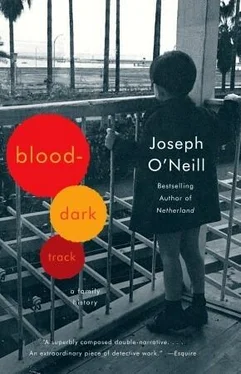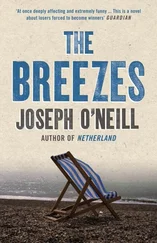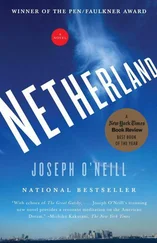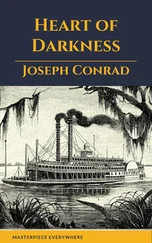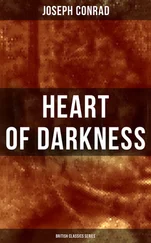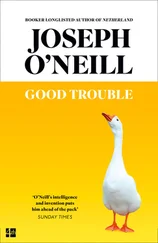Inexplicably delayed, the train remained immobile for an hour. Then, at daybreak, we finally dawdled out of the station, the diesel engine roaring like a bus. We crossed the river Seyhan and sluggishly traversed the northern part of city, where nomads had made camp in a wasteland of cement structures ruined by an earthquake a couple of months before. The train continued to emit monstrous hoots, scattering wild dogs roaming around the track and awakening people in the ramshackle sleeping platforms built on the houses’ flat rooftops. A flock of storks hovered on air currents high in the pale sky. Ahead, the railway line made a frail curve towards the east.
When I first conceived of this outing, my thought was simply to follow in my grandfather’s footsteps on the Taurus Express. But the Taurus Express was no longer an international spy-train. It was merely bound for Gaziantep, a couple of hundred kilometres to the east, and not, as in the old days, across the frontier to Aleppo and beyond. The luxurious wagon-lits had been replaced by tired carriages, and the cosmopolitan gentlemen and shady diplomats and pulp-fiction blondes of the war years had disappeared. Nowadays the train only carried families who could not afford to travel by bus and who in the old days would have sat crushed into hard-seated, sweaty third-class coaches armed with bags of dates, grapes, white cheese and salted nuts. This was not Joseph Dakak’s scene at all. He would never had travelled, for example, in the company of the group of men seated next to me. Dressed in old-fashioned rustic attire, they spoke in an extremely expressive and intent manner, their serious looks and emphatic gestures and low, urgent tones suggesting important and telling confabulations; but I had no idea what any of them was saying, and even if my Turkish had allowed me to eavesdrop I would have been little the wiser, because I had no real idea who these people were or what kind of existence they led. Although, in westernized Mersin, the public lives and values of Christians and Muslims had merged to such an extent as to be superficially indistinguishable, my fellow travellers came from a world I knew little about — and actually feared. They belonged to the Anatolian hinterland into which the train was headed, a region that, on the dozen or so nights I’d crossed it by bus from Istanbul or Izmir to Mersin, had always filled me with a dread of my impending annihilation. I knew it as a black, unfathomable zone of flickering petrol stations, senseless land formations and barely lit villages, a place in which humanity, almost entirely rubbed out by the vast dark erasers of the plains and mountains and sky, was exposed at its most nugatory. What I was really feeling, during these journeys, was the solipsistic anxiety that can result from being plunged among people with whom I stood in a relation of near-total mutual ignorance. To be among such strangers was a form of eradication; for which of them could bear witness to who I was? And the converse was also true: unable meaningfully to incorporate these Anatolians into my construction of the world, I lacked the ability to do them justice. They were literally insignificant.
I was confronting this disagreeable truth, as the train pulled slowly clear of Adana and trundled through the dull, industrialized flatlands of the Çukurova delta, because I was thinking of the hundreds of thousands of Armenians who had passed this way in the autumn of 1915. The Armenians had been forcibly evacuated from places as distant and diverse as Erzerum and Van in the far north-east, and Sivas and Istanbul and Izmir in the west, and Adana and Mersin. They were sent, without proper sustenance, on a journey which took most of them through hundreds of kilometres of mountains and deserts before they reached the Taurus Mountains, where they funnelled through Pozanti and the Cilician Gates before struggling on across Çukurova. Much of their ghastly voyage followed the railroad on which I was travelling. Almost all major stations on the line were the site of lethally unsanitary accumulations of deportees. In November, 20,000 were reported at Tarsus, another 20,000 at Adana, 150,000 more scattered between Adana and the Amanus Mountains. They were on their way to Aleppo and, from there, bound for the Mesopotamian and Syrian deserts. As they marched across Turkey and Syria, the Armenians were subjected to robbery, butchery, starvation, thirst, sexual attacks, and disease. Estimates of the final number of fatalities ranged from 300,000 to over 1.3 million. To put it another way, before the Great War around one and a half million Armenians lived in the territory occupied by modern-day Turkey; by 1923, only 100,000 remained.
In September 1915, Joseph Dakak also headed for Aleppo, where he was about to start his last year of school. It was practically certain that he saw the Armenians trekking east, and since as a schoolboy in Aleppo he was not confined to the grounds of the school and was at liberty to walk around town, he would have seen thousands of Armenians in transit in Aleppo. They formed, by all accounts, a terrifying and heart-rending spectacle. And yet my grandfather never spoke of the death-marches, just as he never spoke about the massacres of 1909 or the Armenian exodus in 1921. At first I’d thought that his was a terrorized dumbness; but I came to realize that it reflected the kind of benighted gulf that divided me from my fellow train passengers.
Just how many Armenians were killed, and in what circumstances, and due to what causes, were questions that continued to cause great controversy. Over eighty years later, Armenians were haunted by an awful sense that a terrible and clear crime against their nation, which had been witnessed and contemporaneously documented in detail by missionaries, consuls, medical workers and other western bystanders resident in Turkey, had gone unacknowledged. Groups like the Armenian National Institute in Washington DC conducted a passionate and relentless campaign to perpetuate the memory of the victims and to gain international recognition of the genocidal character of their deaths and losses: in other words, that what happened was a premeditated effort by the Ottoman government to exterminate the Armenian people. Orthodox Turkish history maintained that the Ottoman government undertook drastic but essentially defensive wartime evacuation measures designed to eliminate a real threat to the security of the State: for example, the Armenian population in Van, in the far east of Anatolia, sided with the Russian forces in a campaign in which tens of thousands of Turkish soldiers died. Insofar as mass deaths and brutalities did occur — and doubt was cast in this regard on ‘pro-Armenian’ accounts — it was said that these were, in essence, the unauthorized work of independent third parties, Kurds, bandits, rogue gendarmes and war-crazed military personnel, whose dreadful actions, calmly considered, were not proof of a State intention of racial annihilation.
Earlier that summer, the French national assembly had voted to declare its recognition of what it expressly called the Armenian genocide. Although the vote was unlikely to be ratified by the Senate, it represented a significant triumph for the Armenian campaign, which had only met with full official success in Russia and Canada. The United States, for example, limited itself to expressing sympathy for the ‘tragedy’, since its relationship with Turkey, a key NATO ally, precluded any further acknowledgement. There was also the wider hazard of setting a precedent. If the Armenians were accommodated, what would there be to stop an even more influential political grouping — the Irish-Americans, for example — from pressing for similar recognition, and historical crystallization, of the moral and legal character of events in their national past? Current Irish historical grievances went at least as far back as 1649, the year Oliver Cromwell re-established the English Parliament’s control of Ireland. Ireland had been unruly since October 1641, when perhaps 4,000 Protestant Ulster settlers were killed by their Catholic neighbours. The massacre — never forgotten by the settlers or their unionist descendants, for whom it served as an example of what would happen to them in Ireland without the protection of the Crown — inspired a widespread Irish rebellion headed, most notably, by Owen Roe O’Neill (no relation); Cromwell’s response was to authorize the killing of thousands of non-combatants at the towns of Drogheda and Wexford. Three and a half centuries later, these slaughters still resonated in certain Irish (and Irish-American) minds as examples not of military barbarity but of a genocidal tendency in the British treatment of the Irish. This tendency was also to be glimpsed in Cromwell’s shipment as slaves to the West Indies of thousands of captured Irish soldiers, and in the ethnic cleansing of the Irish propertied classes in the 1650s, when land in the ownership of indigenous Roman Catholics was turned over to British Protestant settlers while the natives were deported to the wilds of Connacht; but its fullest manifestation occurred with the Great Potato Famine. In terms of the number of dead and deported — the Irish emigrants had, arguably, been subject to a species of expulsion — and also in terms of the catastrophic testimonies of squalor and mass starvation and disease they generated, the victims of the Famine were comparable to the victims of the Armenian holocaust; and from there it was only a short step to another comparison, namely of the nature of the English government’s responsibility for the Famine with that of the Young Turk government’s responsibility for the fate of the Armenians.
Читать дальше
Конец ознакомительного отрывка
Купить книгу
